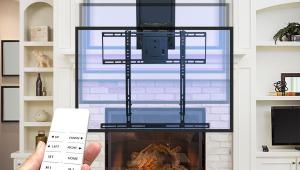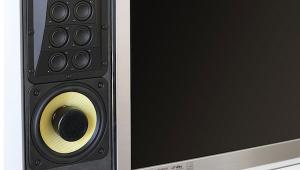Lift-Monster gate installation refers to the process of setting up a Lift Monster automated gate system, typically used for securing residential or commercial properties. The installation involves mounting the gate, connecting the motor, setting up control systems, and configuring safety features such as sensors or remote access. Lift Monster gates are designed for durability and ease of use, offering enhanced security with convenient operation. Proper installation should follow manufacturer guidelines or be performed by a professional to ensure smooth functionality and long-term performance.
Control4 Home Theater and Home Automation System Part 1

Building an automation nation—one house at a time.
I reviewed Control4’s first offering in February of 2006 (oh, those were the days, weren’t they?). The system—based around the company’s $599 Home Theater Controller (HTC)—could easily have been described as a universal remote control with grand aspirations. As the name implies, the HTC was designed to control the components in a home theater (including access to a stored digital music library) with a simple, highly intuitive onscreen graphic user interface. That by itself was pretty sweet. But behind the HTC’s deceptively blank faceplate was hidden a formidable engine capable of powering a sophisticated wholehouse automation and multiroom music system using a combination of Ethernet, Wi-Fi, and ZigBee communication to control things like lights and thermostats as well as distribute music around the house. All you had to do was pony up the extra bucks for the wireless ZigBee thermostats and light switches (up to 125 of them—but at $100-plus a pop, it was unlikely that you’d ever max out the system). You also needed some Control4 Speaker Points, plus the labor to install and program everything, and you were ready to command and conquer the homeland. I liked—no, I lusted after—that original system and was extremely reluctant to box it up and send it back. It couldn’t necessarily do all the amazingly complex things that a Crestron or AMX system could do at the time, but it was a fraction of the price.
In the years since, Control4 has issued a number of revisions and updates to its original 1.0 system software, adding features and functionality and fixing its share of glitches. From time to time, I talked with the Control4 folks about doing a follow-up review to cover some of the changes, but the timing never seemed to be quite right. Last year, however, Control4 released a major overhaul of its operating system, going from OS 1.8 to OS 2.0. It would take a full page or two just to list the new and/or improved features that OS 2.0 offers. What’s really exciting is the scope of possibilities the new OS 2.0 opens up—everything from simple third-party apps that, for example, make it easy to listen to Web radio stations to more elaborate applications like energy management and home healthcare monitoring. It’s a darn near limitless platform.

These new capabilities certainly make the life of a reviewer much more fun, but it makes the job of reviewing the system much harder. Whereas the original Control4 system was a relatively straightforward and typical setup (one theater room, two zones of audio, and a light switch), a new Control4 OS 2.0 system can be as different in my home from your home as my kids are different from yours. (And thank goodness for that.) You may never take advantage of some of the possible features, such as motorized shades or energy management. Other features that aren’t included in this review system, such as wireless thermostats, you might find indispensable. (To tell the truth, I’d love to have one myself.)
Down to the Basics
There are some basics that are common to every Control4 system. Each one includes at least one or a combination of three system controllers: the HC-200B ($399), HC-300C ($699), and HC-1000 ($1,599). The tiny HC-200B is small enough to hide behind your flat-panel HDTV (that’s where the one in my system sits). It’s also affordable enough ($578 with an optional SR-150 handheld remote) to buy solely for use as a mid-priced universal remote control that includes some awesome onscreen menu navigation capabilities. Unfortunately, the HC-200B has no HDMI video outputs—only composite and component. But you can program the HC-200B to use a component input on your HDTV to display the onscreen GUI (as mine does) and switch to the TV’s HDMI input for everything else. The big bonus is that you can add home automation features, such as lighting (dimmers run about $129 each), temperature control (wireless thermostats are $249 each), even motorized door locks ($335 and up) and remote zone Speaker Points ($399 wired/$449 wireless) for multiroom music whenever your budget can tolerate it. While it certainly isn’t chicken feed (which, in my town, runs for about $7.99 per bag on sale), it’s possible that for around a thousand dollars (including labor) you can get an A/V system controller with a couple of light dimmers—and be able to scale up to multizone audio, security, climate control, and energy management in the future.

The HC-300C has more connections than the HC-200 but the same processing power. It includes an SR-250 handheld remote (with an OLED window for system navigation without using an HDTV). It also offers video sensing capability, relay and contact connections, two serial connections, along with composite, S-video, and component—but still no HDMI—outputs. The HC-1000 is a supplemental controller that’s used with one of the other two controllers to increase the responsiveness of large systems. It’s basically a big brain with lots of processing power, an Ethernet jack, and a built-in 500-gigabyte hard drive for media storage plus a couple of USB ports for external hard drives. By the way, that big brain generates a lot of heat, which is dissipated by a fan that’s not much quieter than an F-22 Raptor during takeoff. (OK, I’m exaggerating a bit; it’s more akin to an Apache helicopter.) You’ll want to install the HC-1000 somewhere other than in your theater. Fortunately, the only things the HC-1000 needs to get up and running are an Ethernet connection to your home network and an electrical outlet.
I have all three controllers in my system. My original intent was to use the HC-300C and HC-1000 in the main theater and use the HC-200B to control a separate Onkyo TX-SR605 AVR and DV-CP802 player in the bedroom. The HC-300C lacks HDMI outputs, and there are plenty of vagaries in both the cabling in my theater room and the drivers available for my ancient Sunfire surround processor. As a result, my installers from the SOHO Shop of St. Charles, Missouri, rejiggered the system design and used the HC-200B as the onscreen controller in the main theater room. The HC-300C and HC-1000 were then freed up to do everything else.
- Log in or register to post comments































































